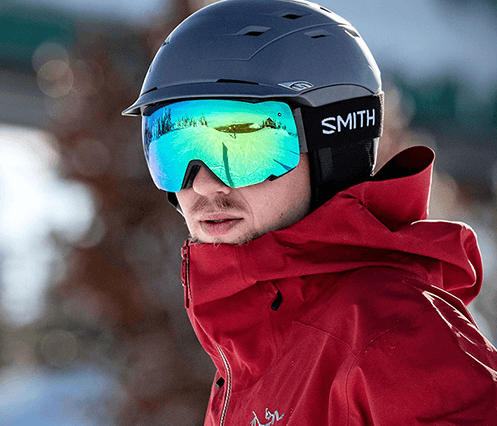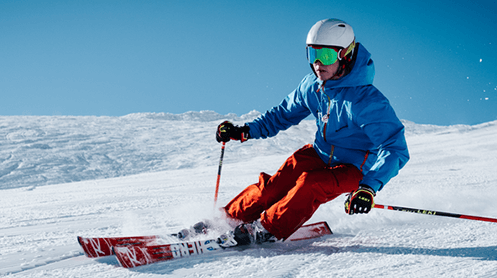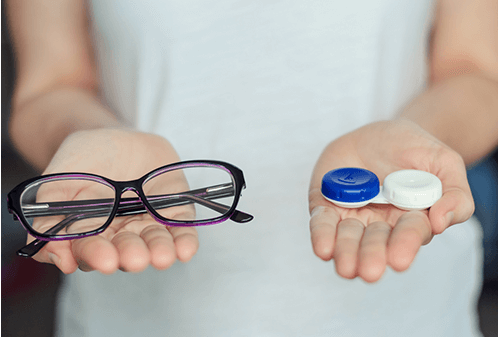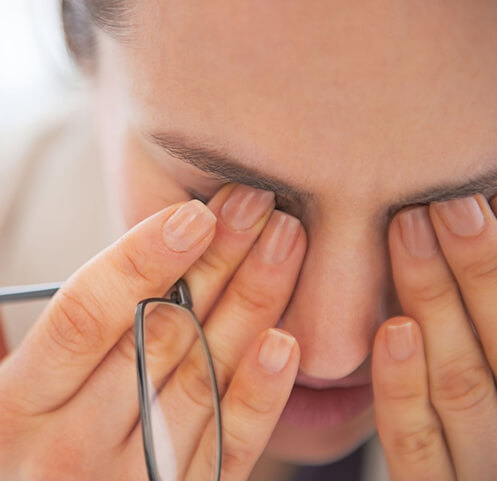To Elevate our Standard of service, availability, and patient care, we are merging some locations — learn more here!
Foolproof Tips to Keep Your Eyes Healthy During Ski Season
Salt Lake City and the surrounding area is home to some of the best ski resorts in Utah. Whether you’re a seasoned skier or snowboarder or it’s your first time on the slopes, it’s important to consider what effect these high-altitude sports can have on your eyes. Intense sunlight and harsh wind can not only damage your eyes, but it can also lead to impaired vision that could result in accidents.
Read on for some tips on how to keep your eyes safe this ski season.
Standard Optical can put your individual, customized prescription lens into nearly any frame for ideal performance sunglasses.

Sun Protection is Important in Any Conditions
It’s easy to remember to wear eye protection on a hot summer day, but what about during the winter? If you’re like most people, it might not even cross your mind… but should it?
Studies show that sunlight reflecting off snow can be harsh enough to cause severe damage to the eyes, including cataracts and several cancers. Exposure to UV rays, low humidity, and dry, freezing wind is greater at higher altitudes, putting skiers and snowboarders at risk for these conditions.
Luckily, with the right protection, it’s easy to keep your eyes safe and healthy on the slopes.
Ski Goggles and Sunglasses
At higher altitudes, the sun reflects brightly upon the snow, and UV rays are stronger since there is less atmosphere to filter them out. That’s why it’s important for skiers and snowboarders to wear either goggles or sunglasses to protect themselves from the snow and wind.

Protection from UV Rays
Ski goggles and sunglasses both come with a UV filter category. The lenses can be polarized, which both increases contrast and reduces the glare of sunlight off the snow, but polarized lenses should not be used in low light as they could impair vision.
The color of the lens also matters, as dark lenses are best for sunny days and lighter lenses are better for days with poor visibility.
Sports Sunglasses for Skiing
Sunglasses for sports like snowboarding and skiing are much different than the sunglasses you wear on the beach or in the car. Your sunglasses should be shatter-resistant and have polarized lenses, and polycarbonate lenses are especially recommended for the slopes.
Finding Your Perfect Ski Goggles
Since ski goggles fit more closely around the face, they offer better protection against snow and wind and are therefore preferred by most people on the slopes, especially in the coldest temperatures and harshest conditions. Ski goggles not only help keep your eyes warm and prevent frostbite, they also help you see well to prevent accidents.
It’s important to consider the fit when you’re looking for ski goggles, as they typically wrap around the back of your ski helmet and may have to accommodate your glasses beneath them. Quality ski goggles should fit flush against your face, and will have vents in the top to prevent your goggles from fogging up.
How Do I Choose?
If the weather is fair, ski goggles could get a little too warm, and you may wish to switch to sunglasses. It’s recommended that you carry both with you, as the weather on the slopes can change quickly, and it’s always best to be prepared rather than risk the health and safety of your eyes.
Seeing Clearly on the Slopes
If you wear any sort of corrective eyewear, this can affect your ability to see clearly while skiing or snowboarding. When it comes to sports eyewear, our experts can help determine what sort of eye protection will best suit your goals and lifestyle. There’s a fit for everyone at Standard Optical. Here are some of the most common questions we receive about sports eyewear:

Can I Wear My Glasses or Contacts?
Absolutely! Many people who wear contact lenses prefer ski goggles over sunglasses, as goggles offer more protection against the wind and will help keep contact lenses from drying out too quickly. It’s a great idea to carry eye drops with you in case your contacts do start to dry out on the slopes.
If you wear glasses, it’s recommended that you find a pair of ski goggles that is a size bigger to accommodate your glasses. However, if you’re not keen on wearing your glasses underneath your ski goggles, your optician can help you order a prescription insert to put behind the lens of your goggles to make sure you have clear vision on the slopes – without the use of glasses or contacts.
What if I Suffer From Dry Eye?
Dry eye occurs when your eyes don’t produce enough tears to lubricate the eye, resulting in a burning sensation, redness, and increased sensitivity to light, among other symptoms. You can also be at a greater risk for dry eye if you’ve undergone LASIK surgery or suffer from digital eye strain.
Blurred vision is also a common symptom of dry eye, which could be dangerous for skiers and snowboarders. Poor vision can lead to accidents. So if your eye drops aren’t cutting it up on the slopes, you may need to seek another form of treatment to ensure clear vision at high altitudes.
Luckily, the Utah eye doctors at Standard Optical are experts at treating specialty eye care needs like dry eye syndrome.

Let Standard Optical Help You Protect Your Eyes This Season!
While the wind and snow could do a number on your eyes when you’re skiing or snowboarding, reducing exposure to UV light is the most critical thing to be aware of. Wearing sunglasses or ski goggles is crucial to preserving the health and safety of your eyes.
If you have any questions about how to protect your eyes on the slopes or are interested in personalized tips on how to find the right protective eyewear for your lifestyle, reach out to the eye care experts at your nearest Standard Optical location!
Call today or schedule an appointment to keep your eyes healthy this ski season!
What People Say About Us

All of the employees have been amazing and so helpful with making sure I got the right glasses. They made me feel very comfortable and informed on what I was getting.
Linda D.
The 2 girls that assisted me were phenomenal. They made me feel comfortable and assisted me in picking out the perfect pair of glasses. I didn't feel rushed and they really took their time with me. I so appreciate them and I will absolutely be returning for years to come.
Lindsay G.

















